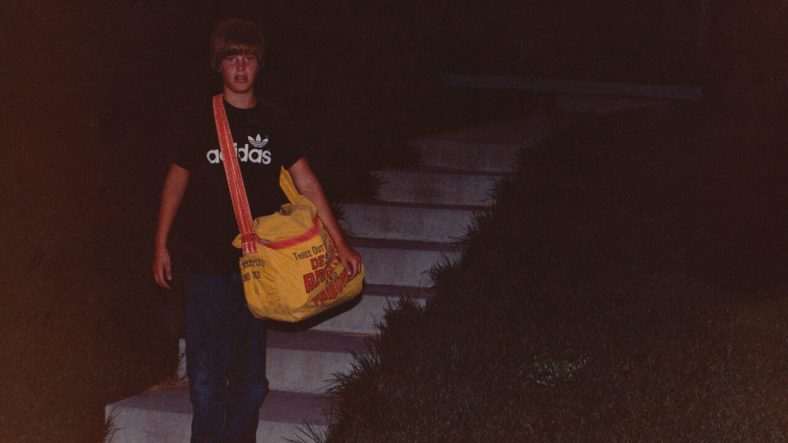This Shocking and Forgotten True Crime Documentary Is Now Streaming For Free

True crime has become a global obsession in recent years. Making a Murderer riveted viewers all over the world upon its 2015 release. The success of that program caused a ripple effect that saw an onslaught of true crime programming being released in rapid succession. And that trend is still going strong nearly a decade later. The true crime documentary I am profiling here was released in 2014 and seems to have gotten lost in the whirlwind of content that followed the success of the monumental Netflix docu-series. And that’s a shame because Who Took Johnny is a compelling profile of a tragic and shocking case that needs to be seen.
The case chronicled within the documentary unfolds from the perspective of Johnny’s mother, Noreen Gosch. At the beginning of the film, we learn that Noreen’s first husband was diagnosed with terminal cancer. Two months before he passed, the family home they shared with their two children was destroyed by a tornado. Eventually, Noreen was able to put the pieces back together and even found love again, giving birth to a child named Johnny. Noreen had a period of reprieve where it seemed like tragedy couldn’t possibly strike again. But in 1982, something unthinkable happened. Johnny, her youngest child, went off to fulfill his duties as a paperboy and vanished without a trace.
Also See: This Harrowing True Crime Documentary Is A Difficult But Necessary Watch
Part of what makes the case profiled within this 2014 doc so memorable is the cultural impact it had. At the time of Johnny’s disappearance, being a paperboy was like a rite of passage; a piece of Americana. A child delivering papers was as American as baseball or apple pie. At that time, parents were inclined to trust that their children would be safe on their paper route. As such, Johnny’s case shattered that illusion for his family and millions of families across the world.
In spite of getting a fair amount of media attention, the case effectively went nowhere. The absence of investigative progress may relate (at least in part) to a lack of action by the West Des Moines Police. Perhaps because 1982 was a simpler time, local officials quickly latched onto the notion that Johnny had run away. They delayed contacting the FBI on the grounds that they weren’t even sure a crime had been committed. And when the FBI was alerted, Noreen Gosch says the bureau referred to her and her husband John as “loons”. One can’t be blamed for assuming that a more urgent approach from local and federal law enforcement may have resulted in more answers and less ambiguity.
After several months with few developments, a man named Paul Bonacci came forward with information that the Gosch family believes he couldn’t have possibly known if he weren’t involved with Johnny’s abduction. Sadly, law enforcement wasn’t particularly thorough in their examination of his claims. While I agree that Bonacci doesn’t appear to be the most credible witness at first glance, it’s hard to deny the credence of his claims.
See Also: This Sinister True Crime Documentary Sees An Online Love Triangle Turn Deadly
Ten years after Johnny’s disappearance, America’s Most Wanted ran an update on the case, even going so far as to track down some of the leads Bonacci provided. From there, the case veered into a web of conspiracy theories and a number of dead ends. But it’s hard not to buy into some of the theories that are floated, particularly when an FBI spokesperson flat-out refuses to discuss the case. But I will stop there to allow first-time viewers to draw their own conclusions.
While it appears that law enforcement made substantial errors in this investigation, Johnny’s disappearance did lead to some positive changes. At the time Johnny vanished, the FBI wouldn’t even look into a kidnapping for 72 hours and local police would frequently default to the runaway narrative when a child would go missing. That has all since changed, largely due to the persistence of the Gosch family.
The case highlighted in the documentary also served to raise new awareness regarding the existence of child predators. Noreen says she hadn’t even heard the word ‘pedophile’ prior to Johnny’s abduction in 1982. And she wasn’t alone in that. The publisher of the local paper in Des Moines (who studied at Harvard) was also ignorant of the definition of the word. It wasn’t that pedophilia didn’t exist at the time. But there was far less awareness and that allowed for children like Johnny to be more easily preyed upon.
Also Read: Unmissable Documentary About Shocking Urban Legend Is Now Free To Stream Online
Another positive development relating to the mishandling of Johnny’s case is the Gosch family’s partnership with John Walsh (future host of America’s Most Wanted). The trio aligned to start The National Center for Missing and Exploited Children. It’s devastating that Walsh and the Gosch families had to endure tragedy to exact positive change. But their efforts have been instrumental in helping countless other families in the years since.
On the whole, co-directors David Beilinson, Michael Galinsky, and Suki Hawley do an effective job of putting viewers in the minds of grief-stricken parents. That ultimately makes Who Took Johnny difficult to watch. But the documentary serves as a fascinating profile of a notorious cold case that should be sought out by anyone intrigued with true crime.
Who Took Johnny is free to stream with a Kanopy subscription. If you’re not familiar, Kanopy is a service powered by your public library. All you need to use the platform is an active library card from a participating branch. It also appears to be available via a couple of small distributors on physical media. But I couldn’t find a single copy on Amazon or eBay when I set out to cover the film. So, Kanopy may be your best bet.
Categorized:Editorials

